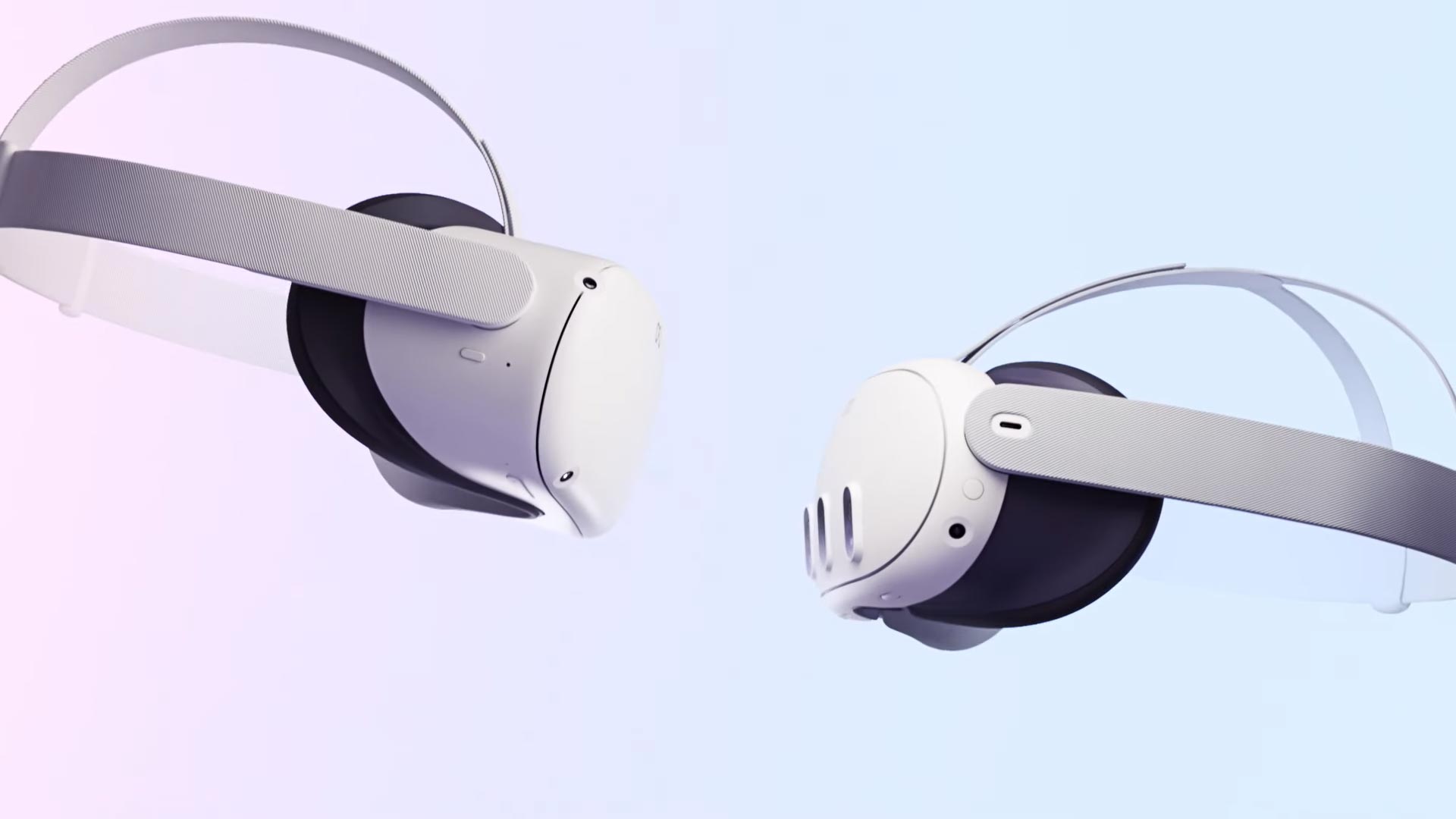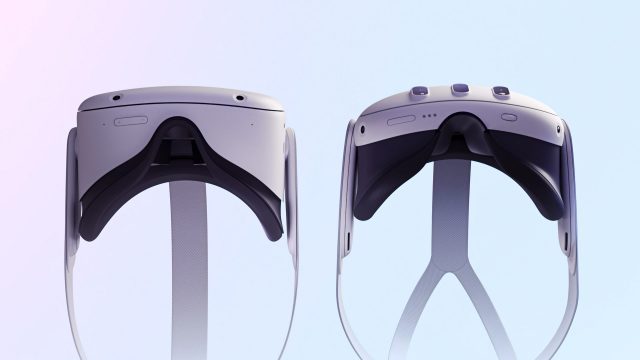Meta Connect 2023 was all about Quest 3 today. The company announced it’s shipping the mixed reality standalone October 10th, starting at $500 for the 128GB version. If you’re wondering whether it’s worth an upgrade, here’s a side-by-side breakdown between the company’s other consumer-focused headset, Quest 2.
Note: Make sure to check out our detailed hands-on with Quest 3, diving into everything from comfort to clarity.
Released in 2020, Quest 2 packs in a fair bit of tech that should keep it relevant for the next few years of VR gaming yet to come. It’s also a lot cheaper, starting at $300 for the 128GB variant. It’s all about standalone VR gaming, which is something that’s about to change with the introduction of Quest 3, the company’s first consumer mixed reality headset.


There are more than a few new additions to Quest 3, namely its slimmer and better-balanced design, faster second-gen Snapdragon XR2 chipset, and full-color mixed reality passthrough function—all of which ought to raise an eyebrow or two as you can not only game with better clarity and comfort, but also dip your toes into the slowly filling pool of mixed reality games.
Yeah, there hasn’t been much in that department, but it’s the most capable standalone headset in its class—for now. Check out the specs below to see just how three years of intergenerational hardware updates chalks up:
Quest 3 vs. Quest 2 Specs |
||
| Quest 3 | Quest 2 | |
| Resolution | 2,064 × 2,208 (4.5MP) per-eye, LCD (2x) | 1,832 × 1,920 (3.5MP) per-eye, LCD (1x) |
| Refresh Rate | 90Hz, 120Hz (experimental) | 60Hz, 72Hz, 80Hz, 90Hz, 120Hz |
| Optics | Pancake non-Fresnel | Single element Fresnel |
| Field-of-view (claimed) | 110ºH × 96ºV | 96ºH × 96ºV |
| Optical Adjustments | Continuous IPD, stepped eye-relief (built in) | Stepped IPD, stepped eye-relief (via included spacer) |
| IPD Adjustment Range | 53–75mm | 58mm, 63mm, 68mm |
| Processor | Snapdragon XR2 Gen 2 | Snapdragon XR2 |
| RAM | 8GB | 6GB |
| Storage | 128GB, 512GB | 64GB, 128GB, 256GB |
| Connectors | USB-C, contact pads for optional dock charging | USB-C |
| Weight | 515g | 503g |
| Battery Life | 1.5-3 hours | 2–3 hours |
| Headset Tracking | Inside-out (no external beacons) | Inside-out (no external beacons) |
| Controller Tracking | Headset-tracked (headset line-of-sight needed) | Headset-tracked (headset line-of-sight needed) |
| Expression Tracking | none | none |
| On-board cameras | 6x external (18ppd RGB sensors 2x) | 4x external |
| Input | Touch Plus (AA battery 1x), hand-tracking, voice | Touch v3 (AA battery 1x), hand-tracking, voice |
| Audio | In-headstrap speakers, 3.5mm aux output | In-headstrap speakers, 3.5mm aux output |
| Microphone | Yes | Yes |
| Pass-through view | Yes (color) | Yes (B&W) |
| MSRP | $500 (128GB), $650 (512GB) | $300 (128GB), $350 (256GB) |
– – — – –
Connect 2023 kicks off today, taking place September 27th and 28th at Meta’s Menlo Park headquarters. There’s been a ton of news already, so make sure to follow along by heading to our main page for all of the latest in Meta’s XR stuff.

